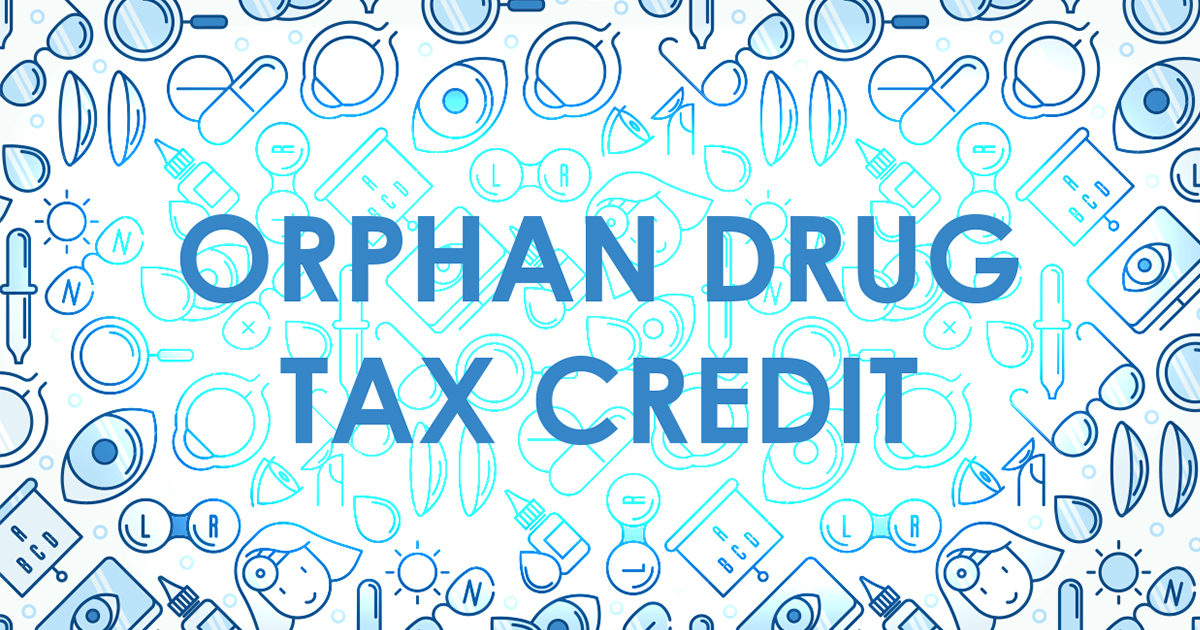Foundation Fighting Blindness in Fight to Preserve Orphan Drug Tax Credit

As House and Senate negotiators reportedly reached agreement on a tax-reform package, the fate of the orphan drug tax credit remained uncertain. Advocates have been marshaling forces to preserve the credit as it exists under current law – a 50% credit to companies developing treatments for rare disorders.
The Senate version of the bill slashes the orphan drug tax credit (ODTC) to 27.5%, whereas the House legislation eliminates it completely. Forces that have been advocating to leave the ODTC untouched include the Foundation Fighting Blindness (FFB), which has joined 90 other patient and health research organizations in issuing a statement, released by the National Organization for Rare Disorders (NORD), opposing the cuts.
Without the ODTC, two of the six orphan designations in ophthalmology mentioned in this post might not exist, according to a 2015 analysis.
Orphan Drug Designations in Ophthalmology
In making the case for the ODTC, FFB CEO Benjamin Yerxa, PhD, invoked two well-known companies in the ophthalmology space working to develop orphan therapies: Spark Therapeutics, which is developing the gene therapy Luxturna (voretigene neparvovec) for treatment of inherited retinal diseases such as Leber congenital amaurosis and retinitis pigmentosa; and AGTC, which is developing candidates to treat inherited orphan retinal diseases such as X-linked retinoschisis, achromatopsia, and X-linked retinitis pigmentosa. Luxturna is under priority review with the Food and Drug Administration (FDA), with an assigned Prescription Drug User Fee Act date of January 12, 2018.
“The positive impact of the orphan drug tax credit is very obvious in the ocular health field,” says Dr. Yerxa. “Because of the economics of rare diseases, that is, a small patient population, the treatment advances developed by companies like Spark Therapeutics and AGTC would likely not have been possible without the credit.”
In its statement, NORD calls the ODTC “one of the most important incentives for developing innovative therapies for rare diseases or conditions.” NORD estimated 30 million Americans have some form of rare disease. A joint 2015 report by the Biotechnology Innovation Organization (BIO) and NORD estimated that without the ODTC, 33% fewer orphan drugs would have been developed in the previous 30 years and that 33% fewer new orphan drugs would get approved in the next 10 years.
BIO also chimed in, crediting the Senate Finance Committee with restoring some of the ODTC, but wanting more. “While we are appreciative that the Senate has maintained part of the credit and we support that inclusion, we still believe the full value of the credit is also justified and will continue making the case with policymakers for its preservation,” BIO spokesman Daniel Seaton tells OIS Weekly.
Sampling of Other Orphan Drug Programs
Besides Spark Therapeutics and AGTC, here’s a sampling of other companies pursuing orphan drug designations in ophthalmology:
- MeriaGTX just last week received rare pediatric disease designation from the FDA for its gene therapy product candidate AAV2/5-OPTIRPE65 (A001) for the treatment of Leber congenital amaurosis due to mutations in the RPE65 gene (LCA2). A001 previously received orphan drug designation from the FDA for the treatment of LCA2 in 2016.
- ONL Therapeutics is developing ONL 1204 for treatment of retinal detachment, and has orphan drug designation for the drug.
- Ophthotech Corporation has plans to pursue three orphan designations for its candidate Zimura C5: Stargardt disease, idiopathic polypoidal choroidal vasculopathy, and posterior uveitis.
- Aura Biosciences is pursuing the candidate AU-011, a first-in-class targeted therapy in development for the primary treatment of ocular melanoma. The FDA has granted orphan drug and fast track designations to AU-011 for ocular melanoma.
